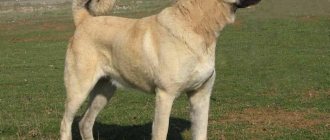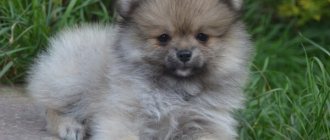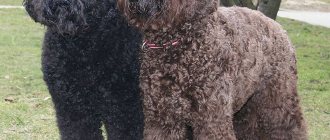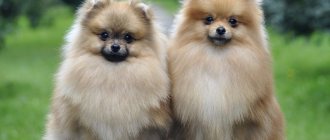The main task of livestock breeders is to develop highly productive breeds with minimal requirements for breeding conditions and care. These are the requirements that Hisex chickens meet - one of the most popular and sought-after crosses, bred in Holland. This bird is intended for breeding both on the largest industrial poultry farms and in small private farms. With unpretentious maintenance and minimal feed consumption, the farmer receives an excellent yield of high-quality meat and egg products.
History of the hybrid
The breed of Highsex chickens was obtained by specialists in Holland. When breeding it, breeders set themselves three main tasks:
- increased egg production;
- reducing the weight of chickens, and, consequently, reducing the amount of feed they consume;
- an increase in the size of the eggs themselves.
And the specialists managed to fully achieve all these three goals. White Leghorn and New Hampshire were used as parent breeds for the new hybrid.
Diseases
Representatives of the cross are characterized by diseases such as salmonellosis, chickenpox, and Newcastle disease. If nutritional rules are not followed, hyper/vitaminosis may develop. Dampness and drafts can cause respiratory diseases. Keeping birds in large numbers can provoke cannibalism.
- Parasites
- Infectious
- Other
Chicken mite
How to treat a chicken coop and how to treat a bird. Description of drugs and methods of control
Read
Coccidiosis
Thirst, loss of appetite, swelling, bloody droppings, anemia, weakness, poor coordination
Read
Ascariasis
Loss of appetite, liquid droppings, pale mucous membranes of the comb, limbs, ruffled plumage, lethargy, vomiting
Read
Amidostomiasis
Symptoms of the acute form: apathy, general weakness, decreased or lack of appetite, breathing problems, unsteady gait, retarded growth and development
Read
Prostagonymosis
Decreased mobility, loss of appetite, unsteady gait, bloating, fever, impaired egg laying, exhaustion
Read
Knemidocoptic mange (“lime foot”)
Acute symptoms: light gray bumps appear on the legs, the bird limps and stands on one leg, the cloaca and joints become inflamed, the beak is deformed
Read
Heteracidosis
Symptoms: indigestion, diarrhea, loss of appetite, lethargy, decreased egg production, retarded growth and development
Read
Trichomoniasis
Symptoms of the acute form: fever, depression and loss of appetite, diarrhea with gas bubbles and a putrid odor, enlarged goiter, difficulty breathing and swallowing
Read
Pullorosis (typhoid fever, salmonellosis)
Weakness, lack of coordination, drooping eyelids, difficulty breathing, lack of appetite, indigestion
Read
Colibacillosis
Lack of appetite, thirst, sudden increase in temperature, pale scallops, diarrhea
Read
Pasteurellosis
Fever, foamy mucus, change in stool color, refusal to feed, thirst, lethargy, wheezing, heavy breathing
Read
Marek's disease
Paralysis of the limbs, difficulty breathing, severe exhaustion and loss of strength, refusal of food and water, pallor of the scallop
Read
Gumboro disease
Diarrhea, loss of appetite, trembling legs and head, sudden death
Read
Laryngotracheitis
Weakness, swelling of the neck, difficulty breathing, cough, wheezing, blood clots in the mucus released when coughing, lack of appetite, indigestion
Read
Bird flu
Refusal to eat, anorexia, diarrhea, purulent discharge, hoarse breathing, greenish-brown droppings, seizures, darkening of the ridge
Read
Newcastle disease
Decreased appetite, fever, respiratory distress, immobility, conjunctivitis, bloody diarrhea
Read
Apteriosis
Complete or partial absence of plumage, loss of tail feathers, broken embryonic fuzz in young animals, delayed growth of plumage, pecking
Read
Pterophagy
Plucking and eating feathers. What is the reason, why does it require urgent intervention and how to prevent the disease?
Read
Yolk peritonitis
Symptoms of the acute form: loss of appetite, gray-green color of feces, sudden drop in egg production, calcareous deposits on the shell, bluish tint and baldness of the abdominal skin
Read
Cloacite
Symptoms: depressed state, decreased appetite, weight loss, increased need for water, loss of plumage, inflammation and bulging of the cloaca, the presence of ulcers on the mucous membrane, decreased egg production
Read
Hisex (chicken breed): general description
What does this popular hybrid among farmers look like? There are currently only two main varieties of Highsex chickens:
- white (white);
- brown (brown).
It is believed that white high-sex crosses are more durable. The young of such birds are usually preserved 100%. The Highsex Brown breed of chickens is very similar in appearance to the rhodonites, well known to many summer residents. The survival rate of young animals for such birds is 90%.
The comb of all Highsex chickens has a rich red color and hangs to one side. When choosing such a bird on the market, homeowners should be as careful as possible. Since chickens are small in size, some sellers may pass off adult Hisex breeds (2-3 years old) as pullets. To avoid making a mistake with your choice, you should look at the bird’s legs when purchasing. In pullets they are light yellow, and in adult chickens they are gray.
Where can I buy in Russia?
Among the first and permanent distributors of Hisex cross-breed chickens is the same Borovskaya poultry farm that presented them in Russia. There are several more enterprises where you can purchase these miracle layers. But let’s start with Borovskaya’s contacts:
- OJSC Poultry Farm Borovskaya . Address: Tyumen region, Tyumen district, pos. Borovsky, st. Ostrovsky 1a. Tel.: Yulia Mikhailovna Shitova - head of the marketing and sales department. Tel.: (3452) 767-952 ext. 3052 Koscheeva Natalya Aleksandrovna - leading manager. Tel.: (3452) 767-952, ext.3056 E-mail
- Breeding aviculture. Address: 143396 Moscow region, Naro-Fominsk district, “Ptichnoe”. Tel.: 436-52-29.
Productivity indicators
These chickens, as already mentioned, are very small in size. They reach a weight of only about 1.4-1.8 kg. In browns, this figure in some cases can be equal to 2 kg. Males of both varieties usually reach a weight of 2.3-2.6 kg.
Some farmers are also interested in how to distinguish Leghorn from Highsex chickens. The answer to this question is relatively simple. Leghorns are slightly larger than Highsex. Hens of this breed weigh about 2 kg, cockerels - 3 kg. In addition, birds of this breed do not have such large combs.
Highsex birds of both varieties reach sexual maturity a little earlier than birds of almost any other breed - already by 4-4.5 months. In a year, one Highsex chicken can lay up to 300 eggs. The weight of the latter, despite the small size of the hen itself, can vary between 65-70 grams. Some chickens of this breed lay even huge eggs - 90 g. But the owners of such a unique bird, unfortunately, in certain cases may have problems with its maintenance. In such a small chicken, a huge egg (almost the weight of a duck) can simply get stuck in the oviduct. To save the bird, it has to be operated on. Which, in turn, greatly affects the productivity of the individual in the future.
The eggs of highsex white chickens are distinguished not only by their large size, but also by their simply excellent taste. They are also valued by farmers for their low cholesterol content. A large number of eggs laid per year is why, among other things, the Highsex Brown breed of chickens has earned good reviews from farmers. The productivity characteristics of this variety are slightly better than those of the white bird. Brown chickens of this breed lay approximately 20-30 pieces. There are more white eggs per year.
Compared to many other breeds, highsex, according to many farmers, have another important advantage. Unlike modern crosses, such chickens practically do not reduce productivity in the second and even third year.
Content
Breeding laying hens for eggs is a profitable business. Females are rarely kept for more than three years, because then their productivity begins to drop sharply, and the meat loses its taste and becomes tough. Males can live on farms significantly longer - about five years. Cockerel meat is rough and rubbery, even at a very young age.
Haysek chickens should be slaughtered for meat no later than two years of age; cockerels are generally not tasty.
Chicken coop structure
You can keep Haysov and Rhodonite on your personal farm, on a small poultry farm. The room should be draft-free and well ventilated. There should be no more than four individuals per square meter. Provide each bird with a feeder, drinker, perch, and nest.
Read how to make a chicken coop for laying hens with your own hands here.
The chicken coop should be warm (at least 12 degrees) and dry; the floor can be insulated with seed husks, sawdust, straw, and hay. Make a separate place for walking, arrange the zones wide enough. If it is not possible to make a pen, the chickens will be able to graze near the yard. This material will tell you about heating a chicken coop in winter.
Proper lighting for raising Hayes is very important - it determines the behavior of the birds and their productivity indicators. The optimal duration of daylight hours is from 12 to 14 hours, lighting should be from 4 to 6 W per meter.
Nutrition
Haysec laying hens should receive sufficient amounts of vitamins, proteins, and minerals. Adults are given grain, beans, fish meal and fresh fish, nettles, herbs, and vegetables. The young are fed boiled eggs, crushed grain, and porridge. It is also recommended to include factory-made combined feeds in the menu. The exact diet and frequency of feeding largely depends on the age of the birds. Chicks are fed 6 times from birth to two weeks, 4 times from two to eight weeks, and 3 times after three months.
The diet must be followed - the first feeding should be in the morning (until daylight is turned on), the second in the afternoon, the third no later than an hour before bedtime. Give small portions, since Highsecs have small stomachs.
An adult eats approximately 120 g of homemade mixtures per day. Be sure to place a container filled with sand in the house. Compound feed is given at 50-80 g for Whites and 60-90 g for Browns. The rules must be followed. Factory mixtures are the basis of the diet, since they are complete and have a balanced composition. When feeding homemade formulas, birds should additionally be given vitamins, minerals, and proteins. Possible options are bone meal, gravel, shells, chalk. An adult chicken needs 250 ml of liquid per day.
Features of care
The Highsex chicken breed can be kept on farms using both cage and floor methods. In any case, there should be at least 1 m3 meter of free space per 4 individuals. A barn for this breed must have good ventilation. These chickens do not like dampness and musty air.
Unfortunately, Highsex cats tolerate cold much worse than most domestic breeds. Therefore, the floor in the barn should be covered with a layer of sawdust at least 15 cm thick. In winter, the room with chickens must be heated. Otherwise, the bird will not only stop laying eggs, but may even freeze to death. The temperature in the barn must be above zero (about +12 °C).
Perches for these chickens are usually located at a height of 60 cm from the floor. In this case, it will be convenient for laying hens to climb on them. In addition, in winter the bird will not freeze. Nests for laying hens are installed in the most secluded and dark places of the poultry house. Experienced farmers do not recommend making them too low and deep. Otherwise, the bird will lay eggs worse.
Chickens of this breed are relatively demanding not only for heat, but also for light. There should be several windows in the poultry house. In addition, a sufficient number of lamps should be placed inside the shed. Daylight hours for this bird should last at least 17 hours a day (even in winter).
Health
To prevent infection by external parasites, ash and sand are used - the mixture is poured into troughs, which are installed in the chicken coop and in the walking area. Birds clean their feathers in this mixture. To prevent internal parasites, feeders and drinking bowls are washed and contaminated litter is changed. Birds are treated with anthelmintic drugs.
Potassium permanganate is periodically added to the water to reduce the risk of bacterial infection. Birds with suspicious symptoms (diarrhea, discharge from the nose and mouth) are separated from the rest. The veterinarian must prescribe treatment and suggest measures to prevent infection of the rest of the livestock.
In accordance with the schedule, vaccinations are carried out against major diseases (Gumboro, Newcastle, infectious bronchitis, salmonellosis, laryngotracheitis, infectious encephalomyelitis). Chickens are given antibiotics and vitamins.
How to feed
The diet for these chickens should be developed a little differently than for ordinary laying hens. Highsex cats are fed 2-3 times a day with mash and grain. In addition, the diet must include legumes and corn. These chickens are given as much food as they can completely eat in 30 minutes. Of course, the mash should not sour in the troughs.
Among other things, universal premixes containing a wide range of microelements should be mixed into the feed for these chickens. The White Highsex chicken breed especially needs such additives. Without premixes, this bird can greatly reduce its productivity.
The water in highsex drinking bowls should always be fresh. To prevent chickens from catching any infection, you should periodically add a little potassium permanganate to it.
Nutrition
Haysa hybrids require feed with a high mineral content. It is recommended to give them food rich in vitamins and protein.
A well-designed diet should contain:
- cereals (wheat, oats, corn, barley) and legumes;
- fresh fish or fishmeal;
- meal, cake;
- vegetables (carrots, zucchini, pumpkin, boiled potatoes);
- vegetation (young nettles);
- coal, chalk, ground eggshells.
An adult bird eats about 115-120 g of food per day.
Advice! Place a container with sand in the chicken coop (this is a means for cleansing the crop and calcium for the shell).
What problems might a farmer face?
Hisex Brown is a breed of chicken (its description was given above), and is therefore relatively unpretentious in food. For the white variety, the diet should be prepared more carefully. But unfortunately, quite often farmers who raise this breed are faced with the problem of pecking their backs and paws. To exclude cases of cannibalism, when keeping these chickens, experienced poultry farmers advise using red lamps in the barn. If pecking does occur, they should be treated with brilliant green or iodine.
Sometimes Highsex chickens also begin to pluck feathers from themselves or their neighbors in the barn. To prevent this from happening, the bird needs to add a little feed sulfur to its food.
Diseases and their treatment
Experienced farmers manage to reduce the mortality rate of hays to almost a minimum, which is achieved through timely vaccination and deworming.
Highsex chickens and roosters rarely get sick, but when kept together with ducks, geese and birds of other breeds, they can become infected with lice or helminths, become victims of avian diseases (pullorosis, brucellosis, staphylococcus, salmonellosis) or be poisoned by poor-quality food.
Most diseases are treated by introducing antibiotics into the daily diet.
Signs of the disease:
- lack of appetite;
- joint weakness;
- exhaustion;
- excessive thirst or lack of desire to drink;
- spasms of the respiratory tract;
- sore throat.
Advice! Isolate sick birds from healthy birds. After contact with them, wash your hands and face with soap and rinse your mouth with alcohol. Keep cats and dogs away from bird drinkers and feeders.
How to get chickens
Since the Highsex is not a pure breed, but a cross, it is, of course, impossible to obtain high-quality offspring from it in homestead farming conditions. In principle, it is possible to incubate the eggs of such chickens. However, chickens bred in this way will not inherit the high productivity of their parents. Actually, Highsex chickens themselves never hatch eggs. Unfortunately, their maternal instinct is completely lost.
Thus, it is possible to obtain young animals of this breed at home only from hatching eggs purchased at a breeding farm or at a poultry farm. They sell it for about 11 rubles apiece. Highsex eggs are incubated in the same way as the eggs of any other laying hens.
conclusions
- Hiseki is a cross-hybrid bred by Dutch breeders. Directions - Brown and White.
- The productivity of the egg and egg-meat industries depends on the size of the birds, their species and living conditions. In general, egg production is high - about 300 eggs per year.
- Hays are a diet-demanding hybrid. It is especially important for White chickens.
- Chickens intended for meat are slaughtered at the age of no more than two years; cockerels are not tasty even when they are young (they have coarse, dry meat).
- The nature of the breed is calm, so the birds get along well with other breeds and ducks, geese.
- To avoid outbreaks of epidemics in the chicken coop, carry out preventive vaccinations in a timely manner, monitor the cleanliness of cages, perches, nests, and isolate sick individuals.
Hybrid Zarya-17
Thus, the Highsex chicken breed is actually distinguished by very high productivity rates. However, this bird, and especially the brown, is not very well adapted to the climatic conditions of Russia. Farmers sometimes still have some difficulties with its maintenance. Therefore, Russian breeders also created the four-line cross Zarya-17 on the basis of this breed. The appearance of these chickens is exactly the same as the highsex ones. The same goes for productivity indicators. The only difference between Zarya-17 and Highsex is its insensitivity to low temperatures.
Flaws
- demands on nutrition and maintenance (in the case of White);
- selection origin is the reason for the need for regular updating of the livestock;
- breeding is a problem because the bird is the result of a scientific-industrial genesis.
Conclusion.
In general, the differences between the two genetic modifications, although located within the same nomination, require a versatile approach to content. Attentiveness and a thorough, qualified approach to keeping birds will lead to good results that satisfy the needs for protein products.
Subscribe to site updates and share the link on social networks.
We wish all the best to you and your loved ones!
Did you like our tips? Share with friends on social media. networks!
What do farmers think about the breed?
So, this hybrid is relatively good in terms of productivity. Owners of homestead farms have a very positive opinion about these crosses. Farmers consider the main advantage of chickens of this breed, of course, to be very high egg production rates. In terms of productivity, Highsex are superior to most modern popular breeds.
Another advantage of the hybrid is that it carries for a very long time. Chickens of the Highsex Brown breed have not received as good reviews from farmers in this regard as Whites. The white variety of this bird, even in the third year of keeping, lays eggs almost every day. Browns, unfortunately, lay well only in the first 2 years.
Of course, there are not only positive reviews about these chickens. According to farmers, highsex also has some disadvantages. The disadvantages of chickens of this breed include, for example, poor resistance to cold and a tendency to pecking. Farm owners also consider white crosses to be too shy. The Highsex Brown chicken breed has a more even character. However, representatives of both species often show aggressiveness towards other farm birds.
Many farmers consider a certain disadvantage of these chickens to be the lack of self-preservation instinct. For example, this bird can completely freely try to take food from a dog. Which will most likely end badly for her.
Incubation
Breeding Hisex White is only possible using an incubator. There are no specific incubation rules.
Table of temperature and humidity modes
| Period |











